
I've had a voice assistant in my house for the past few years and it's hard to know how I ever did without it. The whole family uses it to turn off the lights, ask for the weather or, to my horror, listen to endless amounts of Spotify-skewing pop music. The Polk React brings the convenience of Alexa into a TV-friendly, soundbar form. The essential question is: Do we really need a TV speaker that's also an assistant?
Like
- Amazon Alexa onboard works well.
- Excellent sound quality for the price.
- Smart looking design
Don't Like
- Only one HDMI input
- Optional sub and surrounds are costly.
The new React follows up Polk's original almost-but-not-officially-an-Echo soundbar, the Polk Command Bar. The React differs from the Command because it doesn't include the wireless subwoofer -- it's just a single bar. The React sounds very good and is equally comfortable with movies and music, and its integration with Alexa is even slicker than before. The result is a well-rounded package for your money.
But back to that essential question. Honestly I prefer keeping my assistant in a separate, dedicated speaker. Ask Alexa a question on a hybrid device like the React and the audio grinds to a halt while the assistant does your bidding. That can be annoying, especially when you have to interrupt your The Nevers session to ask a related question.
Then again, you might prefer an all-in-one solution, in particular if you don't already have an Alexa speaker in your living area. And the React is a better value than the $400 Sonos Beam, another Alexa-powered soundbar, although it lacks Sonos' multiroom chops. At the time of publication the React is available for $200, and if you want to improve the sound you can add an optional sub ($180) and/or the SR2 surrounds ($180), providing a nice upgrade path for the future.
What's in the box?
The Polk Command Bar lacked the stylishness of the Sonos Beam, but the React smooths out the awkwardness with touches like its soft, woolen grill. The distinctive central ring section remains -- with volume, action and on/off buttons set in a circle that looks like the top of an old-school Echo -- but the activity light is now an illuminated bar across the front edge.
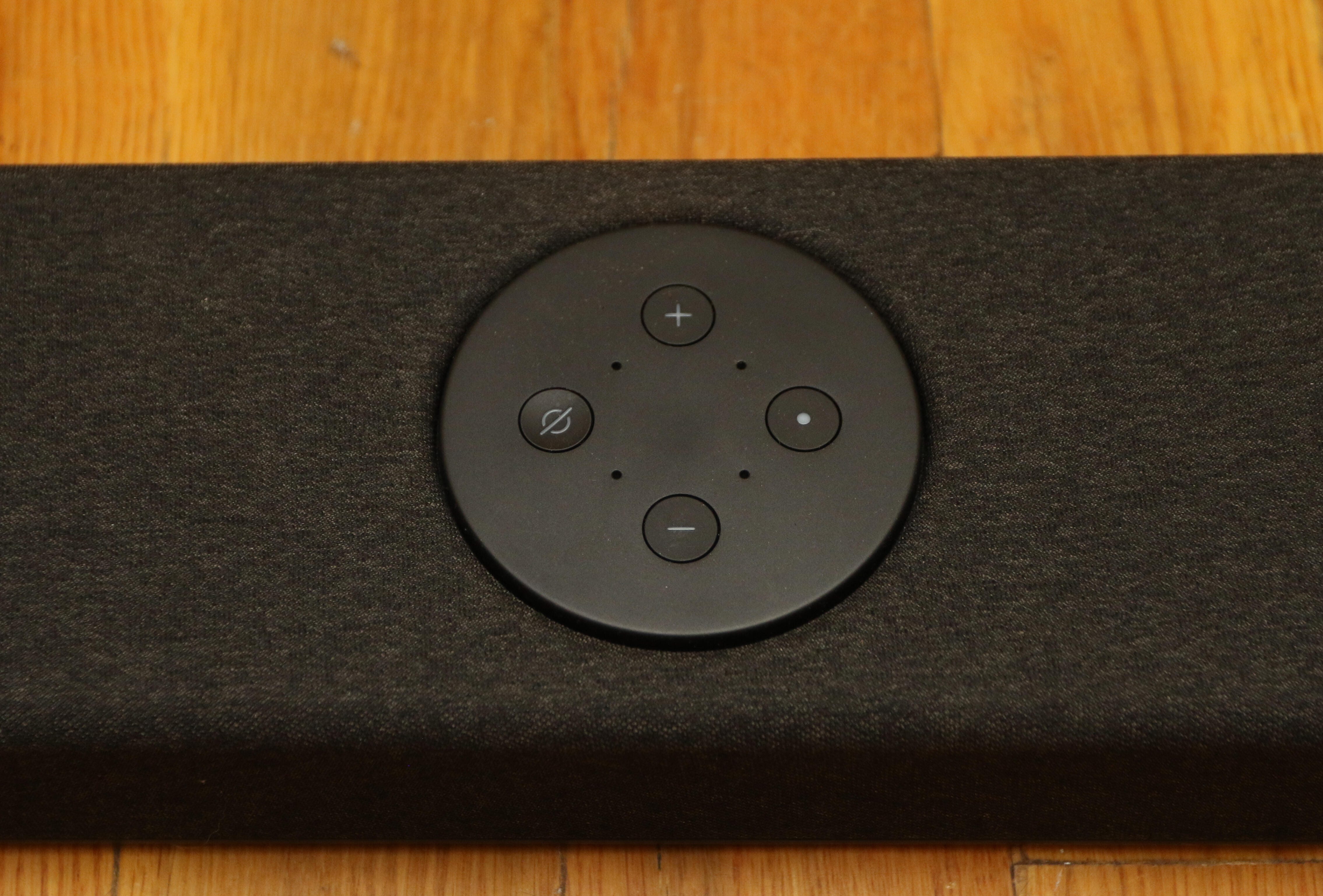
The bar itself measures 2.2 inches high, 4.76 inches deep and 34 inches wide. The soundbar is wall-mountable by way of keyhole keyhole mounts on the back. The audio section consists of two midrange drivers, two tweeters and two passive radiators underneath for added bass.
Inputs run to a single HDMI (ARC) output, an optical input for TV audio, Bluetooth, and a USB that's strictly for firmware updates. I do wish it had the Polk Command Bar's second HDMI port, which is a boon for users with multiple devices. The unit also offers Wi-Fi connectivity, though not Ethernet, for connecting the voice assistant to the Internet.
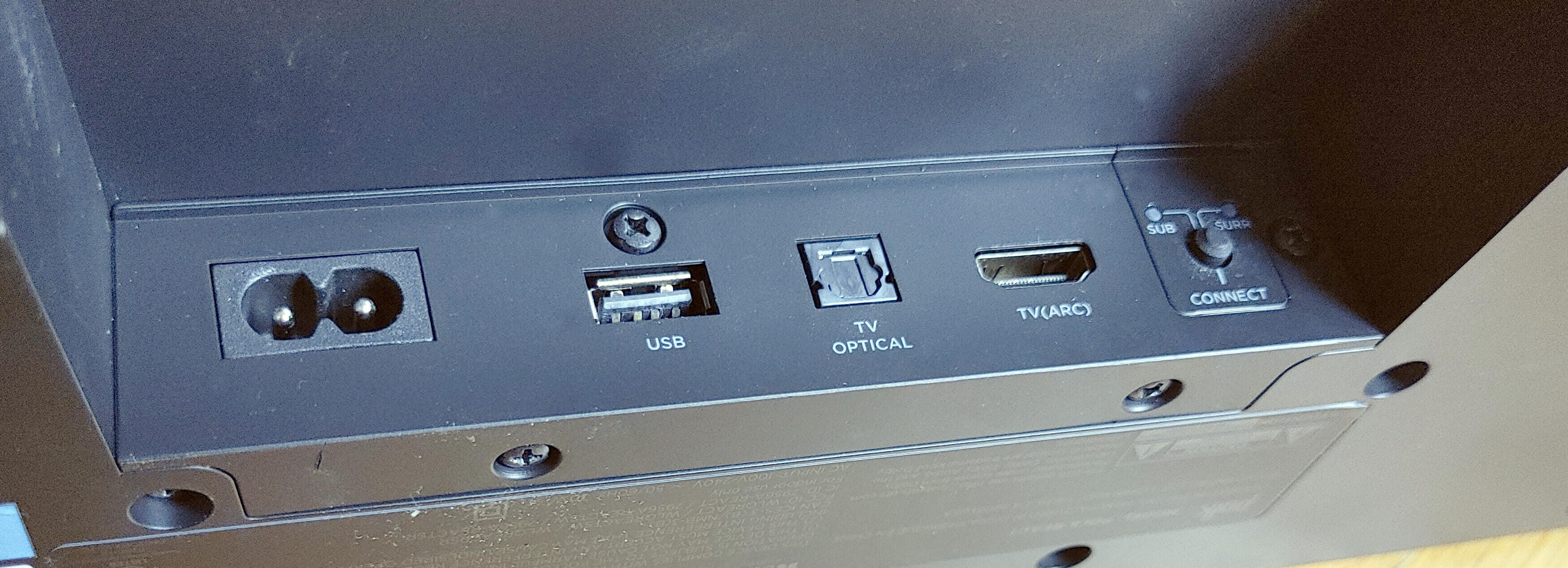
The React includes Amazon's Multi-Room Music compatibility in addition to Spotify Connect, but sadly no AirPlay or Chromecast built in. I did appreciate that song requests via Alexa can be played through Tidal by default, though.
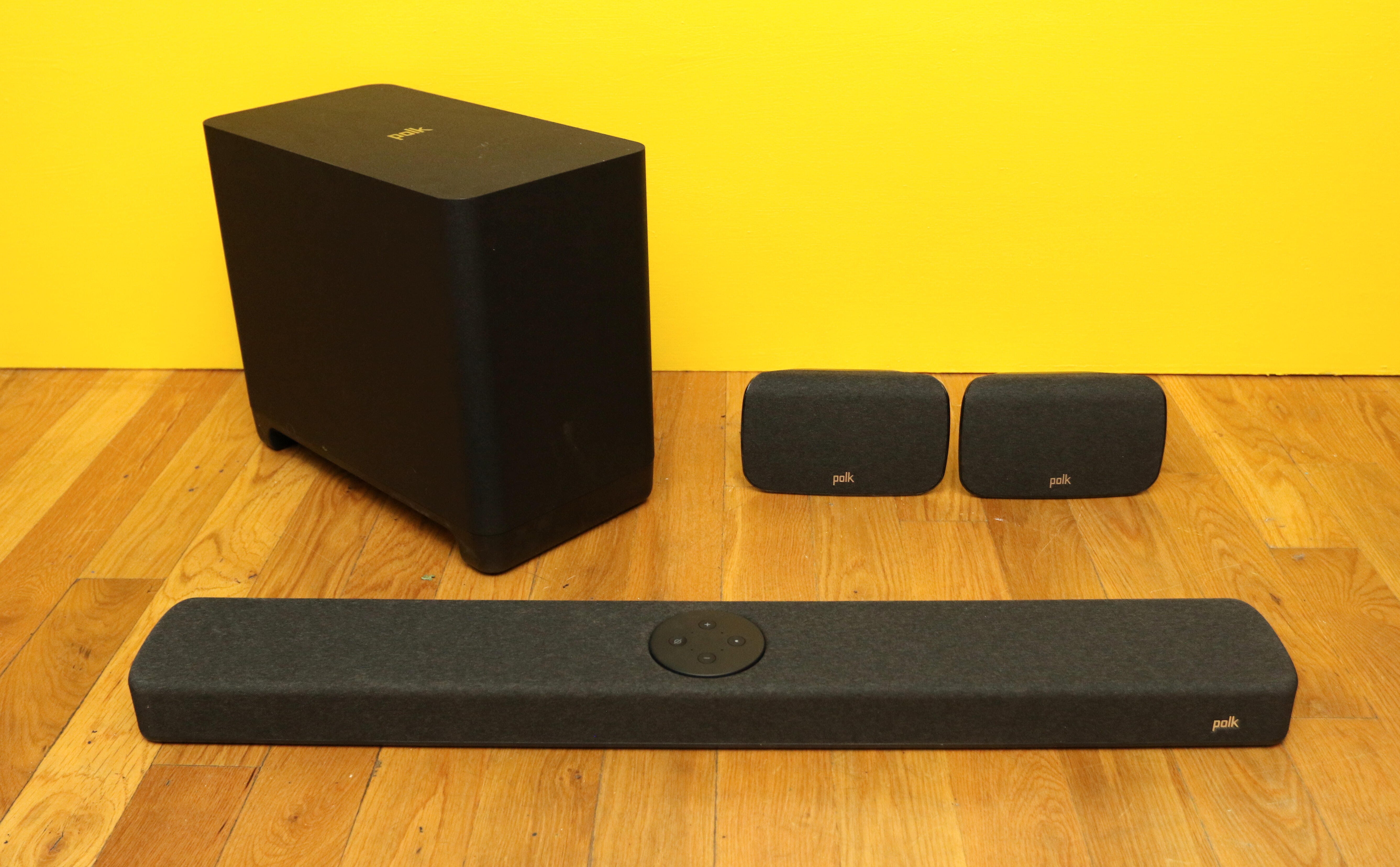
The React can work with an optional Sub and/or surround speakers.
Ty Pendlebury/CNETThe optional wireless Polk React Sub is hefty, akin to the one I saw on the JBL Bar 2.1 Deep Bass, and it costs a pretty penny, too, at $180. The large 16.5-by-8.6-by-13.7-inch box has a 7-inch woofer onboard.
Meanwhile optional rear speakers come in dedicated Left and Right versions and feature 10-foot long power cables. The speakers, shaped vaguely like a glasses case, are finished in gray marle and measure roughly 8 inches long by 4 inches square.
For a relatively inexpensive soundbar, the remote control is pretty comprehensive. It's chunky but in a functional way and it offers plenty of control capabilities -- even for the levels of the rears and the sub. These latter controls could also be seen as a not-so-subtle upsell attempt.
Interacting with Alexa
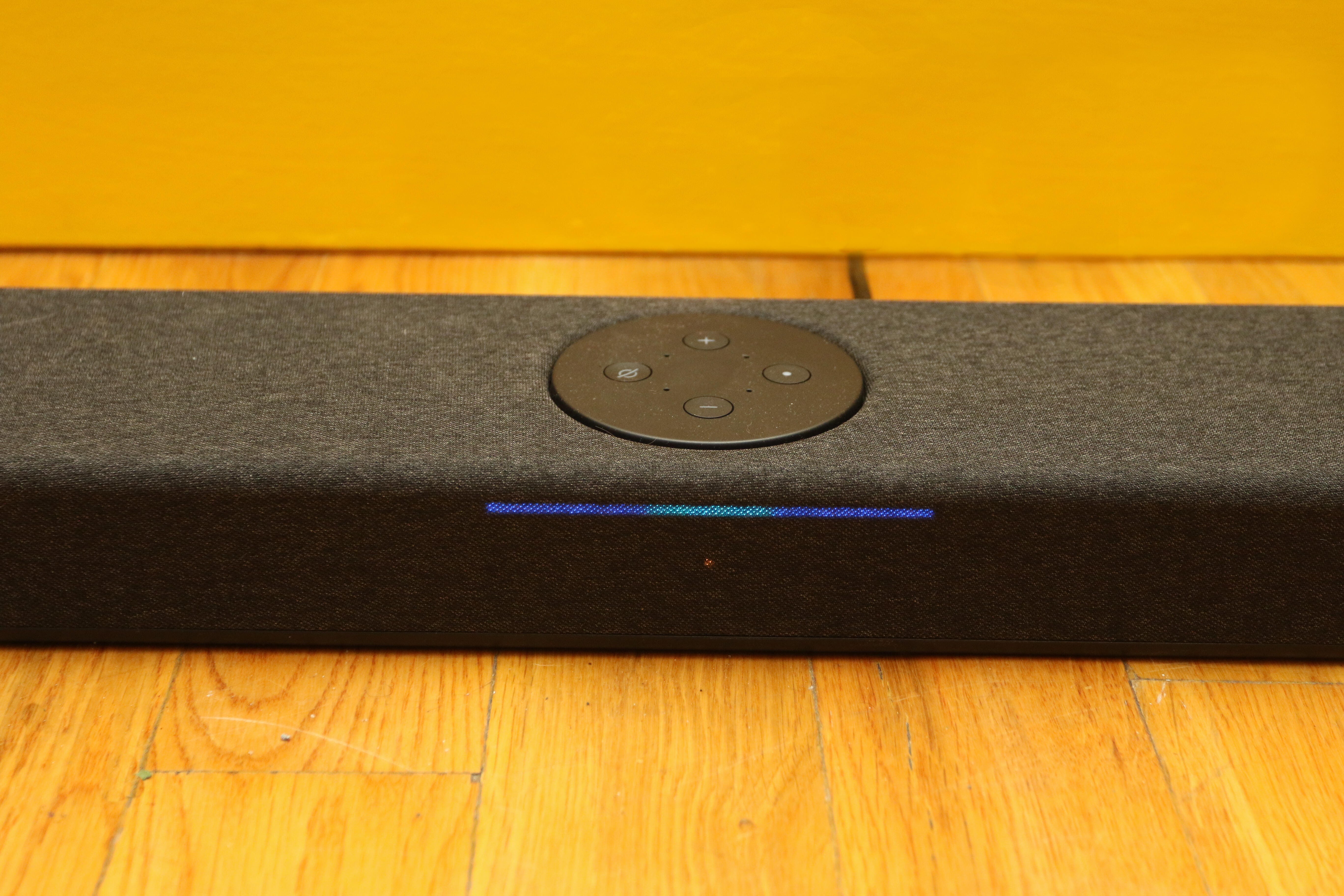
In the time since the introduction of voice assistant-enabled soundbars, I have some second thoughts on the technology, as have seemingly many manufacturers. There are two major reasons. First, people probably already have a digital assistant in their living room by now, because they're reasonably cheap. Second, the sound from the main speaker "ducks" or mutes whenever you issue a command, meaning your show or movie is interrupted.
Those caveats aside, the Polk React was relatively painless when it came to issuing commands, hearing my "Alexa" wake word even when at the highest volume. The speaker doesn't mute completely when it ducks, meaning you can still sort of hear what's going on. Queries were quickly resolved and so the interruption wasn't as great as with other smart soundbars I've tested, such as the Yamaha YAS-209 or JBL Link Bar.
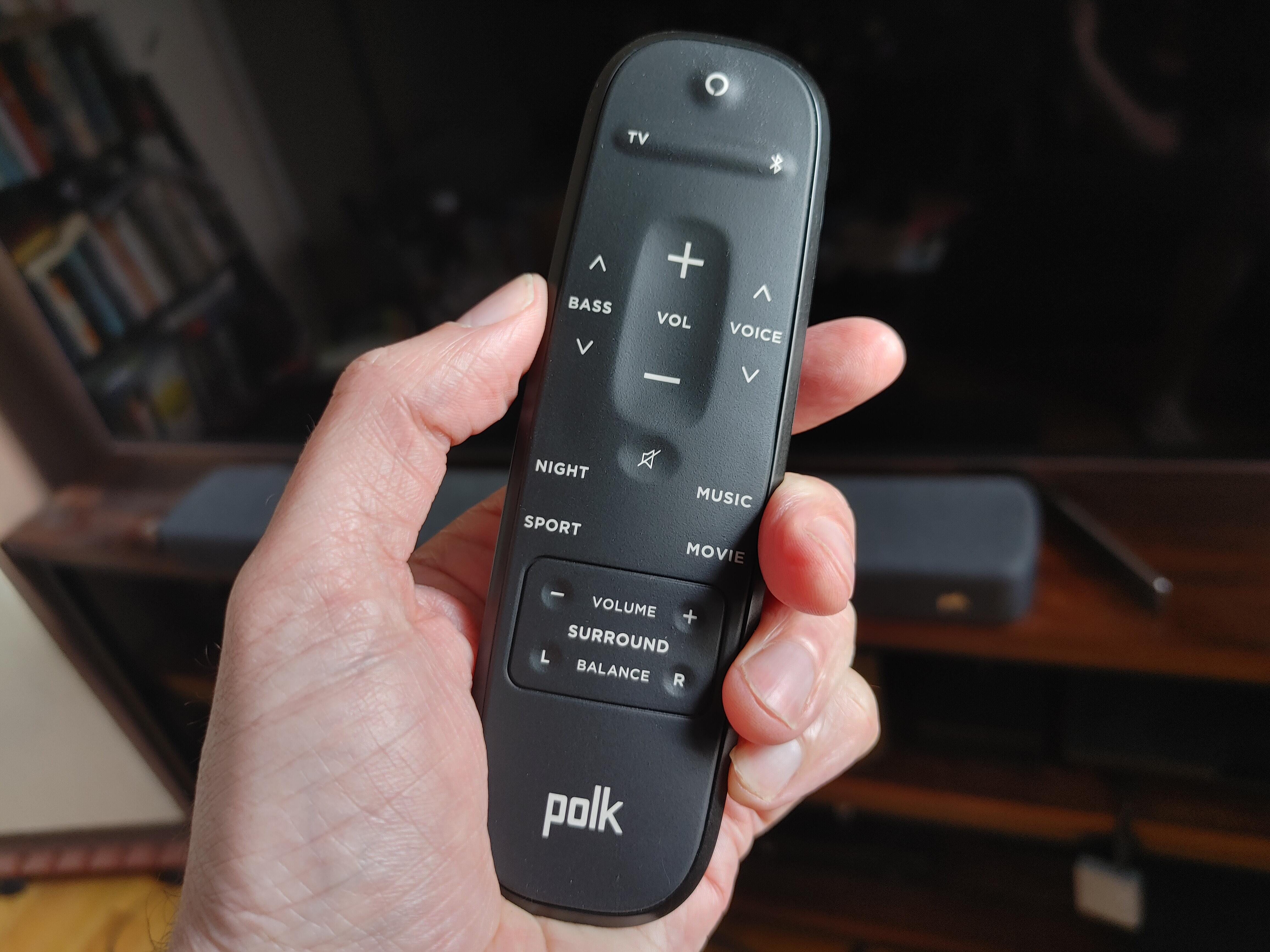
If you don't want to use the remote you can also use your voice for all of the controls, including the ability to alter the sub and rear volumes. In a related fashion, the only thing that irked me during setup was that neither the soundbar nor the subwoofer manual tell you how to sync the peripherals. Hopefully the company can fix this for its May release, but if you're stuck you need to press the sync button on the soundbar for 4 seconds, then the synching device's for 4 seconds, and then touch the soundbar's button quickly again.
A night on the couch
As with the excellent series of TV speakers before it, the Polk React is equally at home with movies as it is with playing music. The array of quickly-changeable sound modes means that you can ask Alexa on the fly if you want to boost intelligibility (voice volume) or bathe in pseudo-surround sound (movie mode).
Sadly, I did not have the Sonos Beam on hand for direct comparison, but I did have two subwoofer-less soundbars, the Vizio M21D-H8 ($150) and the JBL Bar 5.0 Multi Beam ($350), that bookend the Polk in price.
I started my testing with one of the most memorable sequences from a superhero movie -- up there with Superman flying around the world backwards -- which is Wonder Woman going "over the top" of the World War I trenches (1:14:00). Bullets fly as our hero strides confidently through the mud before bracing herself with the help of her shield for a machine gun assault. The scene brought me chills.
The Polk was able to capture the movie's epic sweep, the soundtrack swelled and bullets zinged, but I did miss some of the oomph and immersiveness a larger system could bring. In comparison, the Vizio wasn't as clear and didn't have as much bass. It simply felt a little underpowered for this scene, even with the oft-reliable DTS Virtual:X processing employed.
But it was the JBL Bar 5.0 which sounded the most majestic in this test. With the JBL's Smart Mode turned on, dialogue was still clear but bullets whizzed around the room in a way that they didn't with the other two bars. There was also plenty of bottom end for the shells that exploded around our friends as they approached the German line.
With this and other material I found that the Polk offered the best compromise of sounding full for a reasonable sum, but the JBL was the better home cinema speaker. Maybe it could be worth the extra $100 for movie watching, but not if you want to listen to music.
Like other Polk's before it, the React is able to tap out a tune very convincingly. Nick Cave's Red Right Hand sounded natural and balanced on the Polk at every volume level. While the JBL can go much louder than the Polk, its musical performance came with sonic artifacts. The bass line started to distort and become synth-like beyond only halfway up the dial.
When I added the optional sub and rears the Polk was at its best, as you would expect from a system that now costs $650. The benefits of the sub and rears could be felt whichever kind of material I was listening to, sometimes in unexpected ways. For example, Dead Can Dance's Yulunga Spirit Dancer, especially in Movie mode, was as enjoyable as ever -- the world-music-tinged tune sounded huge, and it was hard to believe it was coming from a soundbar system.
Should you buy it?
With the Polk React the manufacturer has given users a clear upgrade path, a rarity in this category, by offering the optional sub and surrounds. If you have to choose between the two it's a tough call. If you mainly watch TV sports or dramas, then the surrounds will make the most difference as they give the listener the greatest sense of immersion. On the other hand if you like your music loud or your action movies explodey, then it's the sub you should get.
Without the optional speakers, the Polk React offers excellent sonics for a single bar with a smattering of great features for the money. For people who want a hybrid Alexa speaker, it's another satisfying system that lives up to the smart soundbar legacy created by the original Polk Command Bar.




























